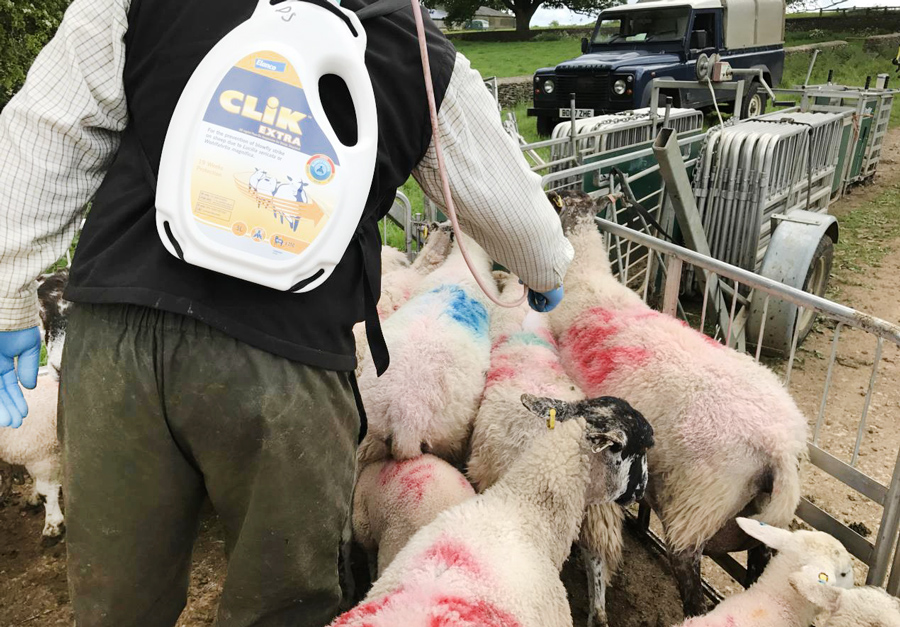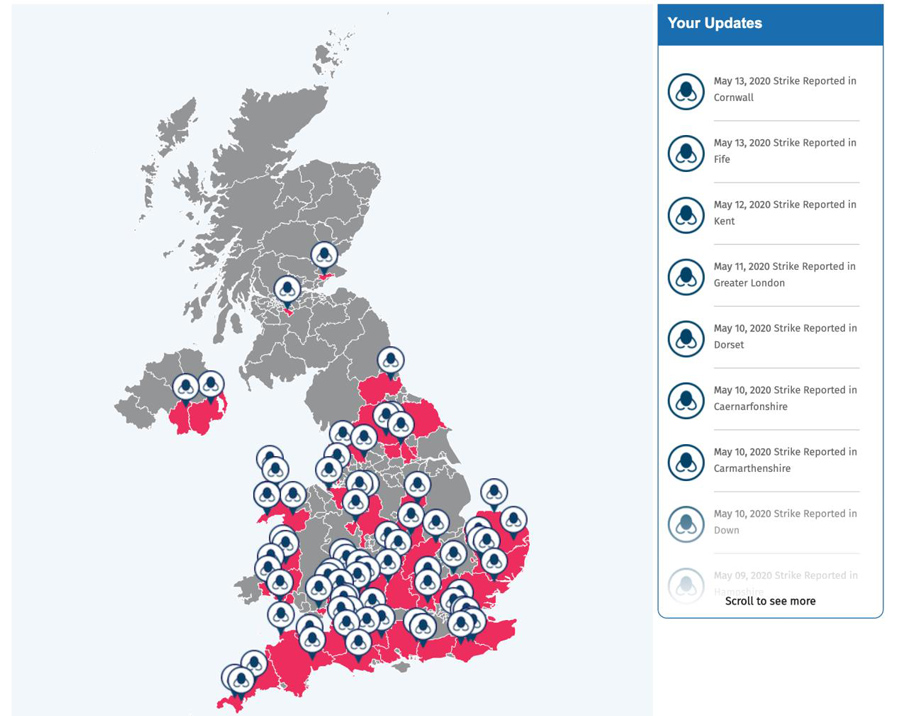Blowfly risk rises to ‘medium’ in some regions
18th May 2020
The risk of blowfly strike has now risen to ‘medium’ in parts of southern and central England, according to real-time updates produced by Elanco and the National Animal Disease Information Service (Nadis).
The risk of blowfly strike has now risen to ‘medium’ in parts of southern and central England, according to real-time updates produced by Elanco and the National Animal Disease Information Service (Nadis).
Zoology professor and ectoparasite specialist Richard Wall, who compiles the Blowfly Risk Alerts, says: “As a result of recent warmer weather, the blowfly strike risk has now started to rise in southern England. Even in areas where the strike risk is still low, occasional strikes may occur, so care is needed. Strike risk typically changes very slowly at the start of the season, but lowland ewes with dirty back ends can be particularly susceptible before shearing at this time of year.”
Farmers are being urged to ‘strike first’ with preventative treatments rather than risk devastation to their own flock. Using protection early reduces risk later in the season by ensuring a much lower fly count as the season progresses.
Regional alert breakdown
| Region | Score |
| NW Scotland | Low |
| E Scotland | Low |
| NE England | Low |
| E Anglia | Low |
| The Midlands | Med |
| S England | Med |
| SW Scotland | Low |
| NW England | Low |
| N Wales | Low |
| SW England | Med |
| S Wales | Low |
| N Ireland | Low |
“We are at the mercy of the weather, so it’s best to apply a treatment that gives you the best coverage,” explains independent sheep veterinary consultant, Dr Fiona Lovatt. “The costs of inaction when it comes to blowfly strike far outweigh the costs of protection – the time to act is now.”
Elanco technical vet Kate Heller adds: “A lot of farmers think ‘it’s not in my control’ because of bad weather or other circumstances. They’re unnecessarily putting limits on themselves. Blowfly strike is not an inevitable part of farming and can be mostly avoided with the right management strategy.
“When farmers are looking at treatment options, they need to look for the longest protection with an IGR that binds to the fleece – It is now possible to get 19 weeks’ blowfly strike prevention. There are no guarantees when it comes to blowfly strike – with significant levels identified into November, an essential part of any strategy, has to ensure an early treatment that extends right through the long season.”
Financial losses
An Elanco blowfly study conducted in partnership with the National Farm Research Unit found that 99 per cent of farmers had suffered financial losses as a result of blowfly strike. Meanwhile, 82 per cent agreed that the blowfly season is getting longer, with cases of strike being reported as early as February and as late as November.
| Blowfly strike: financial losses | Compared to blowfly treatment |
| £200 – breeding a replacement ewe | |
| £80 – loss per lamb death | |
| £10 – production loss per struck lamb | |
| £10 – labour costs handling struck animals | Treatment – 50p per animal |
For more information, you can find real-time reports provided anonymously by farmers on Elanco’s website, or utilise the Elanco/Nadis alert tool.


